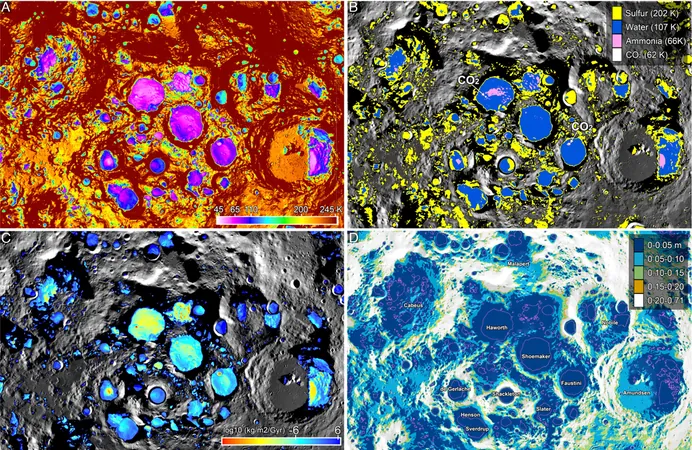
Revolutionary Satellites Create 'Solar Eclipses on Demand' – A Game Changer for Space Research!
2024-12-11
Author: John Tan
Revolutionary Satellites Create 'Solar Eclipses on Demand' – A Game Changer for Space Research!
In a groundbreaking development for solar research, the European Space Agency (ESA) successfully launched two innovative satellites last week that have the capability to produce “solar eclipses on demand.” This remarkable advancement, achieved on December 5 from India, stands to revolutionize our understanding of the sun and its influence on space weather.
The Proba-3 Mission
The dual satellites, part of the Proba-3 mission, were deployed in a unique formation flying technique that allows them to act as a single rigid structure in space. This formation flying not only demonstrates unprecedented space technology but also opens the door to enhanced observations of solar phenomena. Just under 20 minutes post-launch, the satellites separated and immediately began their complex dance in the sky, maintaining a fixed configuration crucial for the success of the mission.
Technical Precision Required
Daniel Seaton, a co-investigator and solar physicist at the Southwest Research Institute, emphasized the precision required for this experiment—movements must be controlled to within a millimeter. Seaton likened the challenge to throwing a football across a field and landing it perfectly on a penny: “That would be easy compared to what they’re doing here,” he noted.
Observing the Corona
As the two satellites orbit Earth, one will align perfectly to cast a shadow on the other, creating an artificial eclipse from a distance of 150 meters. This shadowing will unveil the sun’s elusive outer atmosphere, known as the corona, a region that is significantly hotter than the sun’s surface and is responsible for various space weather phenomena. The ability to observe the corona in detail for up to six hours at a time will provide invaluable data without the need for teams to fly around the globe in pursuit of natural solar eclipses.
Broader Implications for Astronomy
The implications of this technology extend far beyond solar studies. If the Proba-3 mission proves successful, it could lead to the development of larger satellites designed to obscure even more starlight, aiding astronomers in their quest to discover distant exoplanets.
Conclusion
Scientists and space enthusiasts alike are eagerly watching this mission, which could mark the dawn of a new era in astrophysics and planetary science. As we continue to seek answers about our universe and the many mysteries it holds, the capacity for controlled solar eclipses may very well become a pivotal tool in our astronomical toolkit. Prepare to witness a new frontier in space exploration—one where understanding the cosmos is no longer a game of chance, but a precise and deliberate quest!


 Brasil (PT)
Brasil (PT)
 Canada (EN)
Canada (EN)
 Chile (ES)
Chile (ES)
 España (ES)
España (ES)
 France (FR)
France (FR)
 Hong Kong (EN)
Hong Kong (EN)
 Italia (IT)
Italia (IT)
 日本 (JA)
日本 (JA)
 Magyarország (HU)
Magyarország (HU)
 Norge (NO)
Norge (NO)
 Polska (PL)
Polska (PL)
 Schweiz (DE)
Schweiz (DE)
 Singapore (EN)
Singapore (EN)
 Sverige (SV)
Sverige (SV)
 Suomi (FI)
Suomi (FI)
 Türkiye (TR)
Türkiye (TR)